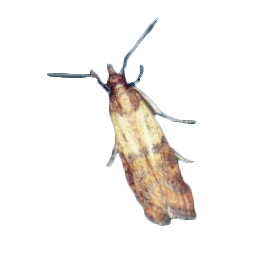The Indian Meal Moths
The Indian meal moth (Plodia interpunctella), also known as the Mediterranean flour moth, is a species of pantry moth. This moth is 10 to 12 mm long with a wingspan of 20 mm. It has wings that sport two distinct colours. The ends have reddish-brown shades, while shades of grey cover the portion close to the body. The larvae are white, but their colour varies according to their diet. If you don’t observe the presence of moths in your kitchen, you can confirm their presence by noticing the strands of silk on your food.
The lifestyle of the Indian meal moth
Habitat
The Indian meal moth can be found across Canada. It infiltrates attics, houses, and food shops. In homes, it can be found in pantries or in cupboards containing pet food.
Diet
The Indian meal moth feeds on all types of grains (cereal, flour, rice, rolled oats, etc.), as well as pasta, nuts, spices, dried fruits, and pet food. The larvae only consume grain dust, since they can’t consume the whole grain. The moth can also chew through thin paper packages to access their contents.
Reproduction
The female Indian meal moth lays between 200 and 400 eggs in her lifetime. She deposits her eggs directly on food. The larvae emerge from the eggs and form cocoons to turn into moths. The complete cycle can take up to one month.

The risks associated with Indian meal moths
An Indian meal moth invasion can destroy the contents of a bakery warehouse. On a smaller scale, it can do considerable damage to the contents of your pantry. The presence of moth droppings on your food will make it unfit for consumption. To prevent the rapid spread of the Indian meal moth and minimize your losses, consult one of our experts, who will help you get rid of these pests.

